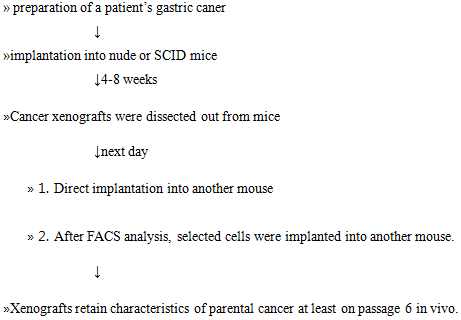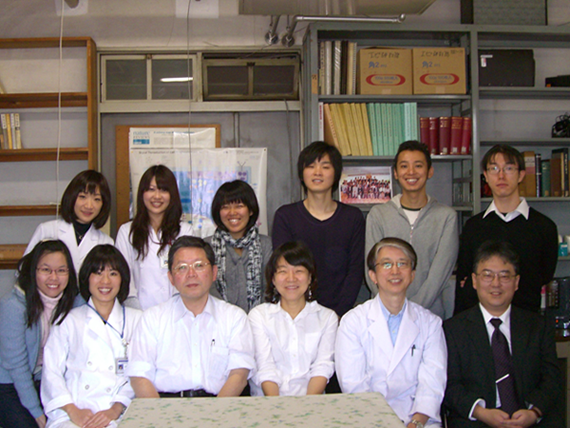Dr. Seol from Korea stays in TMDU, Japan
A3 Foresight Program: Education Program for Young Researchers
Report of visit to TMDU in Japan (Dec. 02 - Dec. 09, 2009)
SEOL HYANG SOOK (Department of Pathology, Asan Medical Center)
Host researcher
Prof. Yasuhito Yuasa, M.D Ph.D (Department of Molecular Oncology, Graduate School of Medical and Dental Sciences, Tokyo Medical and Dental University)
Summary
As the education program for young researchers of A3 Foresight Program, I visited Prof. Yasuhito Yuasa’s laboratory, (Department of Molecular Oncology, Tokyo Medical and Dental University) in Japan. The main purpose of this visit was to learn how to isolate human cancer stem cells and how to examine their tumorigenicity by implanting them into NOD-SCID mice. If we can identify gastric cancer stem cells and use them as target for the therapy, we may get more chance to find target genes or proteins for the treatment of gastric cancer. During my stay in TMDU, I could learn lots of techniques and knowledge on identification of cancer stem cells. My visit to TMDU gave me a great experience which stimulates my spirit and thought as a researcher. Thus I deeply thank my professor and Prof. Yuasa to give me this chance and I hope that A3 foresight program would develop more and more.
Contents
1. Overview of gastric cancer xenograft model
Primary culture of human cancer cells is important to understand cancer biology and to find target genes to cure cancer. But, there is a big bottleneck that we cannot culture human primary cancer cells for long time. Thus, it is so important to maintain for long-term period human cancer cells having same characteristics from a patient’s tissue. In TMDU lab, they tried to maintain patients’ tumor tissues through implantation into nude or SCID mice. This method was so simple, but very useful. Patients’ cancer tissues were cut into small fragments and implanted into nude or SCID mice. After two months, some implanted cancer tissues grew and were used for sub-implantation into other mice and for isolation and identification of cancer stem cells. Tumorigenicity of isolated cancer cells was examined by implanting them into other mice.
Through this system, patients’ cancer tissues can maintain their characteristics for long-term period and we can analyze their nature reproducibly. In the future, we may find new anti cancer target genes and drugs which may lead perfect cure of gastric cancer.
2. How to isolate and identify gastric cancer stem cells.
After gastric cancer tissues were dissected out, tissue specimens were incubated in media with antibiotics to remove bacteria. On the next day, incubated cancer samples were dissociated into single cells, washed with PBS and were stained with antibodies against cancer stem cell markers (ex. CD133 and CD44) for 30min on ice. After the staining, cells were analyzed with FACS (fluorescence activated cell sorting). Cells with cancer stem cell markers were selected, mixed with matrigel and implanted into nude or SCID mice.
Summary of procedures:

In FACS analysis, cell surface marker expression profile differed greatly depending on xenograft lines, but the profile did not change greatly during passages in vivo. So, we have to establish various xenograft lines and use the same xenograft line to obtain reproducible results.
3. Presentation of my own work
I introduced my own work “Discovery of new anti-cancer target genes through human genome-wide siRNA screening” and my interests in this program at TMDU on Dec. 7.
A photo and acknowledgment

I thank Dr. Hiroshi Fukamachi for instructing the experimental techniques of making xenografts and isolating cancer stem cells. I also thank all laboratory members for their warm hospitality.
I sincerely thank Prof. Yasuhito Yuasa for his kind acceptance and all arrangement about my visit to TMDU.



